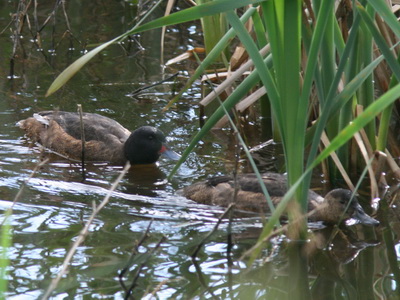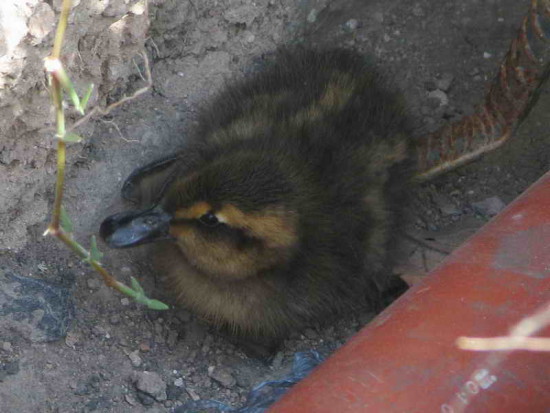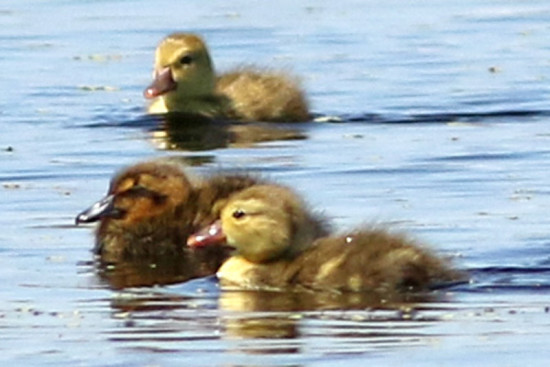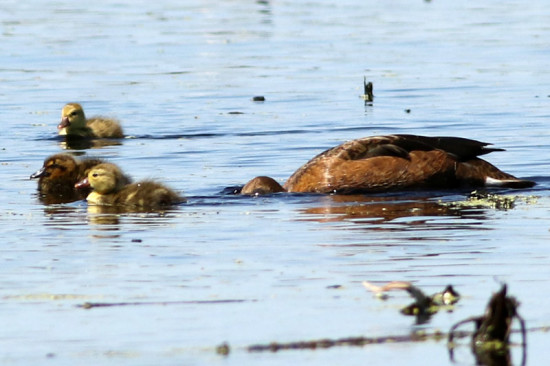Parasitism is a biological interrelationship in which the parasite exploits the host to cover basic an vital needs. In this interrelationship the parasite isbenefited since it receives a service in change of nothing. It is frequently associated to feeding needs, that is, they use the host as food source to survive. An example related to birds might be mites (ectoparasites), which may cause illnesses and even death if the bird gets infested with these organisms.
But here we will deal with another type of parasitism in which both actors are birds and the dependence is not related to food but to reproduction. It is called brood parasitism. The parasite's benefit is that eggs are incubated and chicks reared by the host. So the host does the hard work and it is most likely its own clutch will not prosper.
There are variants in this host-parasite relation. Parasitism is obligate when the parasite can no longer build its own nest. Parasites which may build their own nests or parasitize are facultative.
If the parasitic species targets only one species is said to be a specialist. If it affects several, a generalist. The term generalist is applied at population level, not at an individual level. Shiny Cowbirds Molothrus bonariensis are known to parasitize some 250 species in their distribution area, but does one Shiny Cowbird parasitize the same species or several?
The third relation refers to the species affected. If it is the same species (intraspecific) or a different one (interspecific). In the case of obligate parasites it is redundant to speak of interspecificity since parasites have no choice but lay eggs in other species' nests since they can not build their own nests. But facultative parasitism may be intraspecific, interspecific or both at the same time.
Most cases of facultative parasitism is found in anatids. If it is intraspecific all ducklings are alike, so they must be detected through DNA studies or watching the behaviour of ducks. We must add that in the case of ducks parasitism is much lighter since ducklings feed by themselves. The host only incubates eggs and is relieved from the hard task of feeding chicks.
Obligate parasitism occurs in approximately 1% of the bird species and is concentrated in only 5 families (Cuculidae, Estrilididae, Indicatoridae, Icteridae and Anatidae). The cuculids have the greatest number of parasitic species and anatids have only one.
Parasitism at the reserve
We know about 5 parasitic species at Costanera up to 2016 but we do not have records of all of them. They belong to three families. In all the cases parasitism was detected when the adopted fledgelings were being fed by their fostered parents.
Striped Cuckoo Tapera naevia of the Family Cuculidae
Though there are several cuculids here, this is the only parasite. Since 2008 it has been seen/heard on a few occasions.
It is a generalist obligate parasite. It parasitizes a great number of species, many of them furnarids.
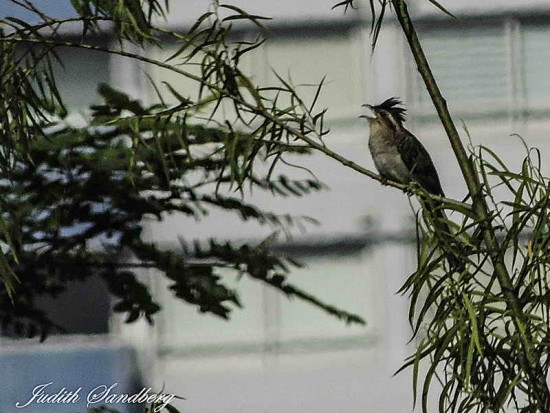 5 12 2015 © Judith Sandberg 5 12 2015 © Judith Sandberg |
Black-headed duck Heteronetta atricapilla of the Family Anatidae
It was common at the reserve till the drought in 2008. It has popped up sporadically since the refilling of the ponds up to now (2016). It is a generalist obligate parasite. It parasitized aquatic species (coots, gulls, ducks, etc), many of them breeding at the reserve.
Fulvous Whistling-Duck Dendrocygna bicolor of the Family Anatidae
Unlike the previous duck, this one is facultative. It lays one or two eggs in the same or another species' nests. So it may be intraspecific or interspecific. On two occasions we detected ducklings of Fulvous Whistling-duck inside Rosy-billed Pochard families. In both cases adoptees stayed with the fostered family till they were grown up. Fulvous Whistling-Duck also breeds at the reserve. We do not know of intraspecific cases.
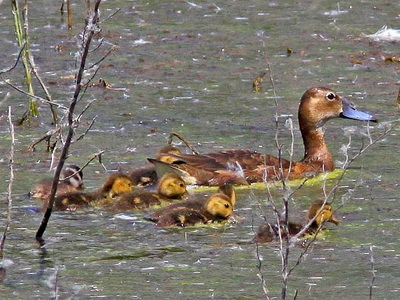 12 2009 © José Luis Merlo 12 2009 © José Luis MerloSee the complete stories |
The Shiny Molothrus bonariensis and the Screaming Molothrus rufoaxillaris Cowbirds of the Family Icteridae
Thery are obligate parasites. The Shiny Cowbird is a generalist and the Screaming Cowbird a specialist.
Shiny Cowbird Molothrus bonariensis
The Shiny Cowbird parasitizes some 250 species in all its area of distribution (South America till the Antillas). Here at Costanera we have recorded 12 species up to the moment. (Masked Yellowthroat, House Wren, Yellow-winged Blackbird, Sooty-fronted Spinetail, Rufous Hornero, Black-capped Warbling-Finch, Black-and-rufous Warbling-Finch, Rufous-collared Sparrow, Chalk-browed Mockingbird, Greyish Baywing, White-lined Tanager, Red-eyed Vireo).
See all the cases of brood parasitism
The Shiny Cowbird is a generalist but it is not known whether a female parasitizes several species (host-generalist relation) or only one (host-specialist relation) or if inside a population some females may be specialists and some others generalists. There are two hypothesis: if they follow their foster parents' imprinting they will be specialists. If they follow the type of nest they were reared in, they will be generalists. The Shiny Cowbird may lay white or spotted eggs, but their chicks are not mimetic.
Screaming Cowbird Molothrus rufoaxillaris
The Screaming Cowbird parasitizes the Greyish Baywing almost exclusively. It covers a smaller area than the Shiny Cowbird. It is found in Argentina, (except the Andes and Patagonia), in the South of Brasil, Uruguay, Paraguay and the southeast of Bolivia.
Both the eggs and the chicks are very similar to those of the host. Two differences to take into account: the black lore (absent in the Screaming Cowbird) and the black colour of the undercoverts in the Screaming Cowbird. Chicks' vocalizations of both species are also quite alike.
See Screaming Cowbird and Greyish Baywing


